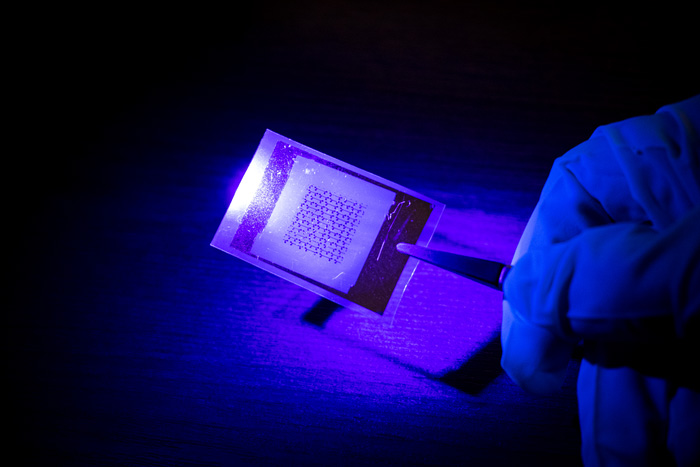
Flexible UV light sensor developed by a team led by scientists at Nanyang Technological University, Singapore. The team reports that the sensor was 25 times more responsive and 330 times more sensitive than existing sensors in a lab test. [Image: NTU Singapore]
Skin cancer is by far the most common type of cancer in the U.S., with one in five Americans developing the disease by age 70. The vast majority of skin cancers—including 86% of melanomas, the deadliest form—are associated with exposure to ultraviolet (UV) radiation from the sun. In fact, a person’s risk for melanoma doubles after more than five sunburns.
Researchers from Singapore and the United States have created a high-performance, flexible UV sensor that can more easily be incorporated into wearable technology for personal UV monitoring (ACS Nano, doi: 10.1021/acsnano.0c10374). In the future, the team believes, the photodetector, which is reportedly 25 times more responsive and 330 times more sensitive than existing devices, could help prevent UV overexposure and a heightened risk of skin cancer for users.
Designing a better sensor
Beyond the potential of smart health monitoring, UV photodetectors have many existing applications in the medical, construction and semiconductor industries. Yet flexible incarnations of the technology have been hindered by low performance compared to their rigid counterparts. Flexible UV sensors based on gallium nitride (GaN), the material of choice for photodetectors within this spectral range, suffer from low responsivity and relatively high dark current.
Munho Kim and his colleagues explored a new sensor architecture based on free-standing single-crystalline layers of GaN and aluminum gallium nitride (AlGaN). Previous devices formed from AlGaN/GaN heterostructures have showed large responsivity, but also high dark current. The team overcame this issue by manipulating the 2D electron gas (2DEG) found between the AlGaN and GaN layers.
“This new scheme effectively reduced the dark current by disconnecting the conductive channel at the heterostructure interface, and, most importantly, maintained the high responsivity though a 2DEG-induced internal gain mechanism simultaneously,” said Kim, an assistant professor at the School of Electronic and Electrical Engineering at Nanyang Technological University, Singapore.
Tested for wearable applications
The researchers manufactured their AlGaN/GaN photodetectors on a flexible thermoplastic polymer and ran them through a series of optoelectronic characterizations. The devices achieved a low dark current of 3.85 nA and a high photocurrent of 0.13 mA at a bias voltage of –5 V, leading to a high 3.4×104 ratio of photocurrent to dark current. Responsivity was calculated to be 1670 A/W at –5 V, which significantly exceeded 100% quantum efficiency and thus indicated the existence of an internal gain mechanism in the device.
When placed under the stress of bending, the photodetectors recorded a responsivity level ranging from 529 to 1340 A/W, which is roughly a hundred times higher than existing flexible UV sensors. This high performance remained stable after 100 cycles of repetitive bending—a performance that demonstrated, to the team, a level of robustness for integration into wearable technology.
“Our result suggests that it is feasible to realize large-scale, lightweight, and flexible optoelectronics and electronics with outstanding performance toward various applications in wearable systems for personal UV monitoring, smart gloves or suits with UV detectivity, and electronic-eye-type UV imagers,” Kim said.
